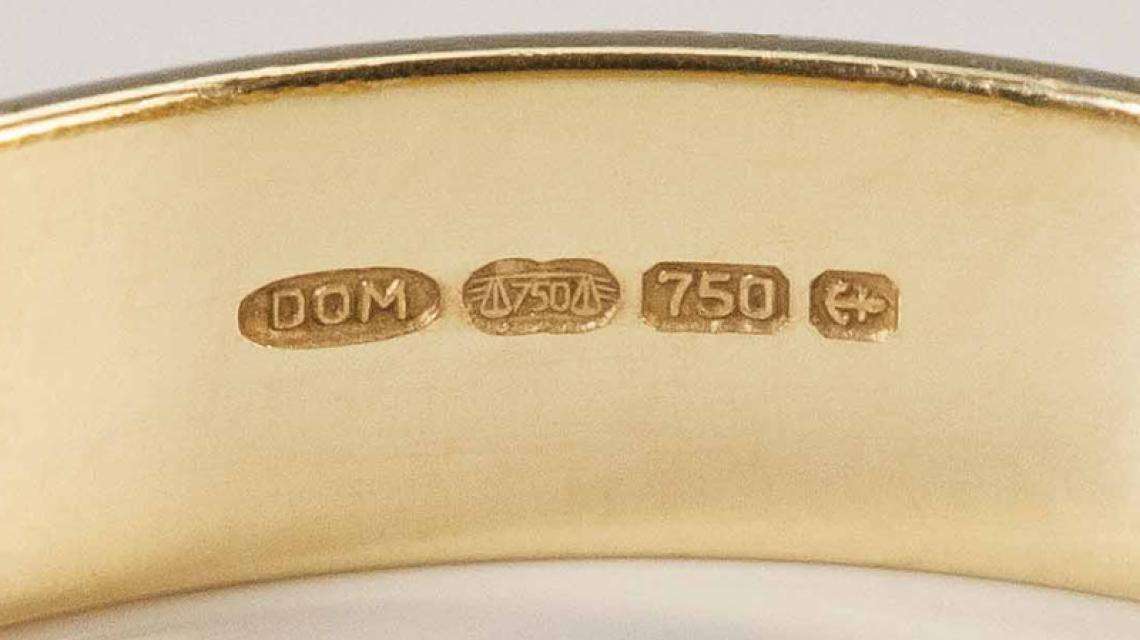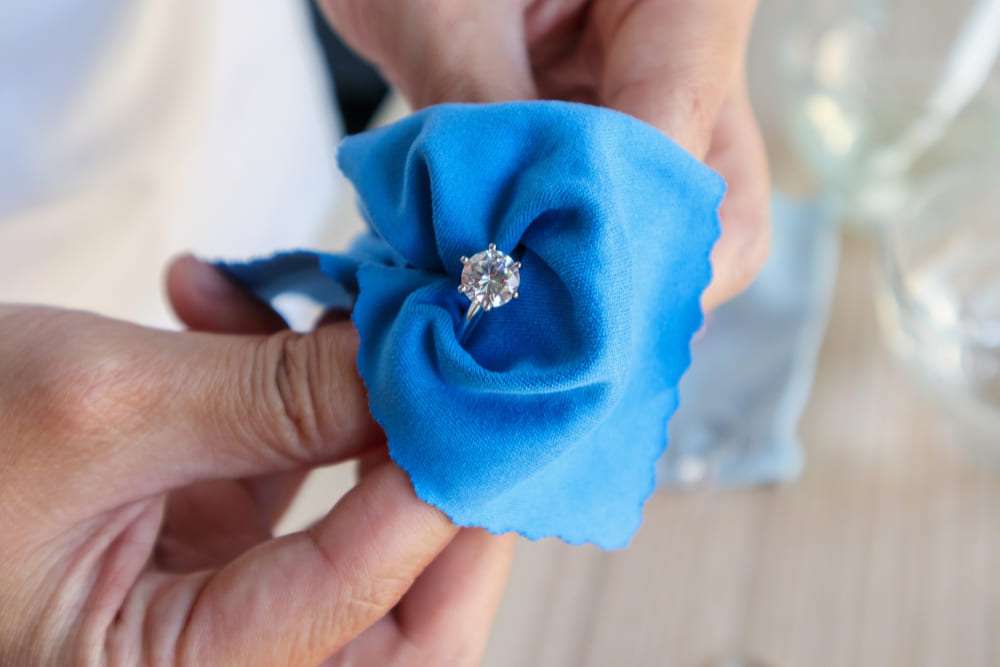Sustainable Jewelry is the making of jewelry using ethical materials, with the least negative impact on the environment and the people that make it.
The jewelry industry, often synonymous with luxury and opulence, has been historically linked to environmental concerns
Let’s check out what is being done and how the process has been documented.
Table of Contents
Sustainable Jewelry was the subject of the 2006 film ‘Blood Diamond’ starring Leonardo DiCaprio.
It brought to light the violation of human rights as well as the environmental destruction, connected with the extraction of diamonds to finance military rebels. Much has been written about the problems linked to gold mining.
The recent documentary film ‘Dying for Gold’, tells the story of mining in South Africa. It has increased awareness about the gold mining industry. Environmental connected diseases, such as Silicosis, linked to the mercury and cyanide used for separating minerals from the ore, have decimated generations of miners.
The Environmental Impact of the Jewelry Industry
In the realm of fashionable adornments, ‘Sustainable Jewelry’ emerges as a beacon of conscious consumerism. The very essence of sustainable jewelry lies in its commitment to mitigating the environmental toll of the conventional jewelry industry. From the extraction of raw materials to the final product, each phase warrants scrutiny for its potential ecological footprint.
Digging Deeper: Unearthing the Environmental Challenges
Mining activities, a fundamental part of the industry, contribute significantly to deforestation, soil erosion, and habitat destruction. The extraction of precious metals and gemstones not only depletes finite resources but also poses a threat to biodiversity.
The Hidden Toll Of Environmental Degradation
Traditional jewelry production processes involve the extensive use of chemicals, resulting in water pollution and soil contamination. The release of harmful substances during metal extraction and processing contributes to the degradation of ecosystems, impacting aquatic life and agricultural lands. The carbon footprint associated with energy-intensive mining operations further exacerbates the industry’s overall environmental impact.
A Shimmer of Change:The Rise of Sustainable Practices
Acknowledging the dire need for change, the jewelry industry is experiencing a paradigm shift towards sustainability. Sustainable jewelry adopts practices that prioritize environmental conservation and ethical sourcing. This shift encompasses various aspects, including responsible mining, the use of recycled materials, and adherence to fair labor practices.
Responsible Sourcing: Ethical Mining Takes Center Stage
One of the cornerstones of sustainable jewelry is the adoption of ethical mining practices. Unlike traditional mining, which often involves exploitative labor conditions and environmentally harmful methods, ethical mining focuses on minimizing negative social and environmental impacts. This entails ensuring fair wages, safe working conditions, and reduced ecological disruption.
Reclaiming Beauty: The Rise of Recycled Materials
Another pivotal aspect of sustainable jewelry lies in the utilization of recycled materials. Recycling precious metals and gemstones not only reduces the demand for new mining but also minimizes the environmental impact associated with extraction. This cyclical approach to sourcing materials aligns with the principles of a circular economy, promoting resource efficiency and waste reduction.
Recycled Gold

Precious metals can be melted down and reused.
As reported by ’ The Alliance for Responsible Mining’ in 2017 just over 50% of gold, that went into jewelry manufacturing was from recycling old gold. According to their statistics and I quote, ”jewelry in Europe and North America does not need to use newly mined gold”.
Check out:
Gold Rings: The Eternal Appeal
Crafting a Greener Future: The Role of Design and Innovation
In the pursuit of sustainability, jewelry designers are redefining creativity by integrating eco-friendly materials and innovative techniques. From 3D printing with recycled metals to using alternative materials like lab-grown diamonds, the industry is witnessing a transformation that blends aesthetics with environmental responsibility.
Beyond Greenwashing: Navigating the Landscape of Authenticity
Greenwashing, a deceptive practice where companies falsely claim environmental consciousness, is a challenge in the industry. Authenticating sustainability claims through certifications and transparent supply chains becomes imperative for consumers seeking genuine eco-friendly options.
Setting Sustainable Jewelry Standards
The Kimberley Process is a multilateral worldwide trade agreement, which was set up in 2003, to try and prevent the trade of conflict diamonds. Suppliers are required to be a members of the certified Jewellery council and to source from mine operators that follow internationally recognized labor, trade, and environmental standards.

Responsible Jewelry council

In this scenario, the Fairmined label was set up in 2004. It guarantees the source of origin and helps small mines, that supply the jewelry industry. It also guarantees livelihoods for the miners.
There is a case for jewelers to balance their gold buying between recycled gold and Fairmined gold. For example, in Eastern Congo, a group of women miners led by Kahambu Vaherenie have returned after the civil war and are being helped by a Canadian NGO called Impact which allows the women to sell their gold at a fair price.
Responsible Jewelry
How do we know if gold or diamonds come from ethically sourced mines? There are companies such as Haelixa that create transparency by offering proof of origin of raw materials. The company can identify the specific mine or location of cutting and polishing.
10 easy ways we become environmentally conscious shoppers:
- Choosing jewelry made from recycled materials
- Investing in pieces that are designed to last
- Looking for brands that use ethical production methods
- Supporting independent makers who prioritize jewelry sustainability
- Opting for natural materials like wood that are biodegradable
- Buying easily repaired jewels rather than disposable ones
- Investing in secondhand or vintage pieces
- Preferring ethically-mined gemstones
- Avoiding materials that harm the environment such as coral or conflict diamonds
- Supporting brands that give back to the environment and help social causes
Mining Gold

Most of the gold that is mined industrially is used for non-jewelry purposes. It might be used for investment.
Small artisan gold mines still exist and give work to a lot of people. However, they only account for less than 15% of gold output.
Lab-Created Diamonds

Mining is often linked to exploitation and unethical practices but there is an alternative. The stones can also be lab-created whereby diamonds are created with the same physical and optical characteristics offering exceptional value. Today many brands offer these types of diamonds
James Allen is a leader in lab-created diamonds and has over 500,000 diamonds to choose from and they are all GIA, IGI, or AGS-graded diamonds.
Check out my post:
Lab-Grown Diamonds vs. Natural : Myths and Misconceptions
Training indigenous craftspeople to make Ethical Jewelry
Then there are Ethical Jewelry makers like London-based Pippa Small who has helped train and employ artisans and even refugees from third-world countries. She collaborated with the world’s first registered Fairtrade gold mine in Bolivia and has helped women in Afghanistan, Kenya, and Burma develop skills in making jewelry.
She was awarded an MBE by Queen Elizabeth for her services in promoting ethical jewelry. Others have found ways to give back to third-world miners and artisans, a small percentage of their profits.
Sustainable Jewelry: made in the USA

This is a growing, dynamic sector as environment-related questions touch more people.
To name just a few:
- Aide-memoire based in Seattle makes bespoke jewels using 100% recycled precious metals and ethical fair-trade, recycled, or lab-grown diamonds.
- Able is an ethical fashion brand that employs women as a solution to end poverty. They make their jewels in Nashville.
- Brilliant Earth is based in San Francisco and has been creating ethically sourced jewelry since 2005
- Made Trade makes responsibly made jewels from minimalist bracelets to geometric necklaces.
- Washed Ashore is based in Los Angeles and specializes in recycled metals and gemstones from vintage jewels. The Company has partnered with Carbonfund.org to help fight global warming.
Brilliant Earth was one of the first jewelers to offer blockchain-enabled diamonds at scale, to provide traceability of a diamond’s origin and ownership.They also strive to use 100% recycled precious metals to minimize their footprint.
Check out these 18k Fairmined Tierra Diamond Hoop Earrings. Purchase from this Limited Edition collection contributes to the socialeconomic development of artisanal and small mining comminities.
Sustainable Jewelry: made in the UK

Monica Vinader is a UK-based contemporary demi-fine jewelry company making affordable jewels that have been made by ethically sourced family-owned manufacturers. They are specialized in Vermeil jewelry and belong to the Responsible Jewellery Council. The company supports charities that help women and children in third-world countries.
Wild Fawn is a London-based ethical company that makes minimalist custom-made jewels using sterling silver and re-cycled 9 K gold.
Alighieri makes beautifully textured pieces made from recycled bronze or silver which are then plated with gold.
Sustainable Jewelry: made in Italy

Not as developed as in other countries, there are however notable exceptions
Emi & Eve run by Cassandra Postema makes original pieces from brass that have been recuperated from American or Chinese bombs and bullets which have fallen on Cambodia. They then use local artisans to make with local stones and the pieces are then finished and gold-plated in Italy.
Damiani adheres to the Kimberley Process and uses ethically sourced stones using suppliers that adhere to the Kimberley Process.
Maraismara is a workshop that only uses Fairtrade gold, recycled silver, and responsibly sourced diamonds.
Sustainable Jewelry Packaging
Many brands are now using eco-friendly packaging with 100% recycled paper which is of course great for the planet.
Conclusion
.As consumers increasingly demand transparency and ethical practices, the industry is compelled to embrace Jewelry Sustainability. The power lies in the hands of the consumer, whose choices can drive positive change. By opting for sustainable jewelry, individuals contribute to a ripple effect that extends beyond their personal choices, influencing industry practices and fostering a culture of environmental responsibility.
Now you can buy from beautiful collections of sustainable jewelry or ethical diamonds and help protect our planet for future generations.
Now check out ‘ A Potted History of Jewelry’
 Jewellery Reflections jewelry buying and information blog
Jewellery Reflections jewelry buying and information blog







2 comments
Pingback: Gold Rings: the eternal appeal of timeless elegance!
Pingback: Affordable Online Jewelry Brands in 2023